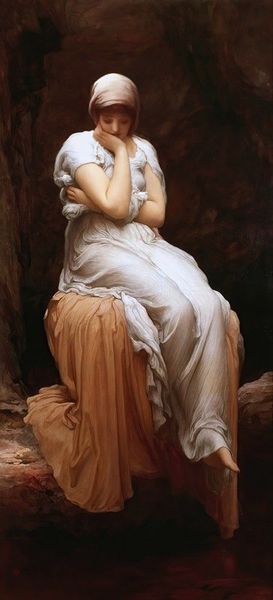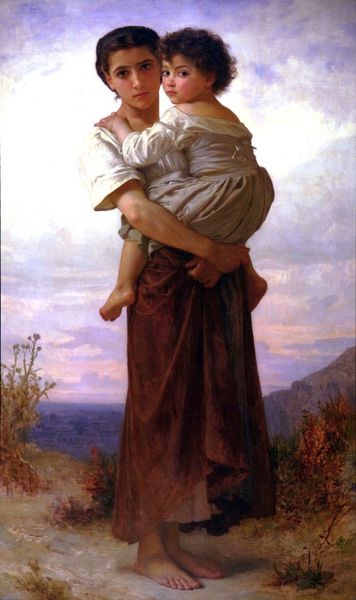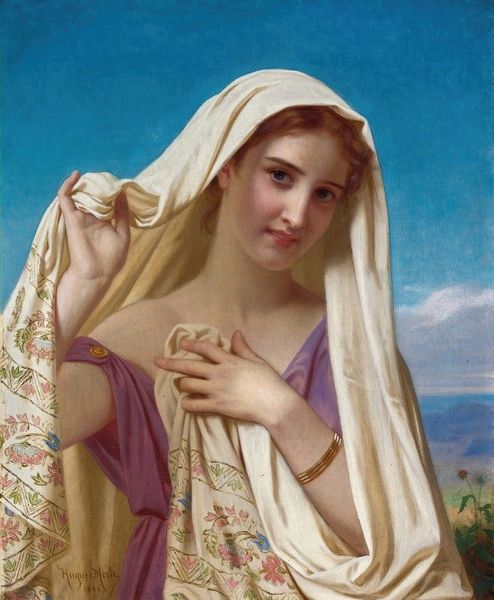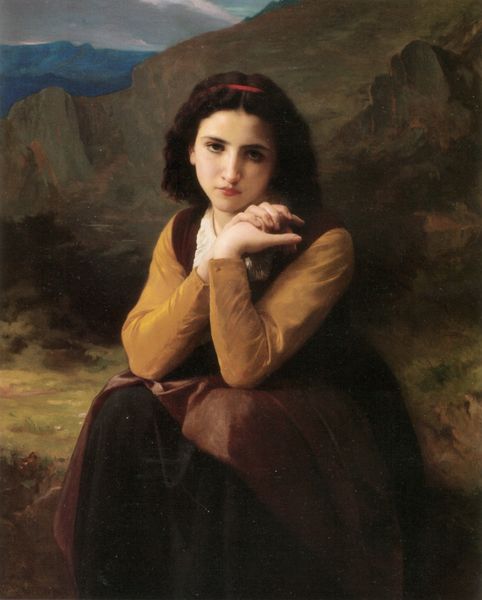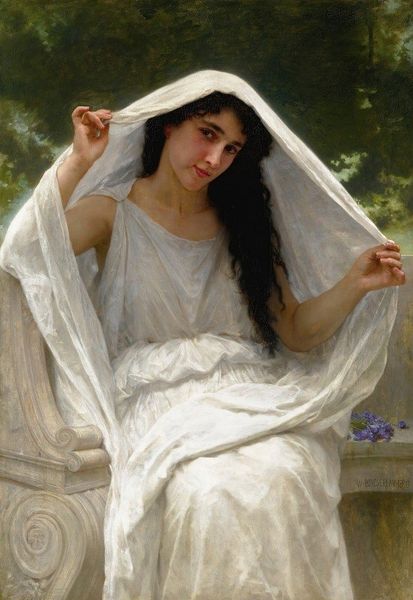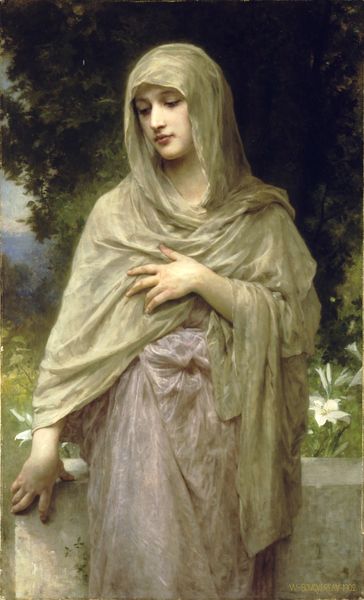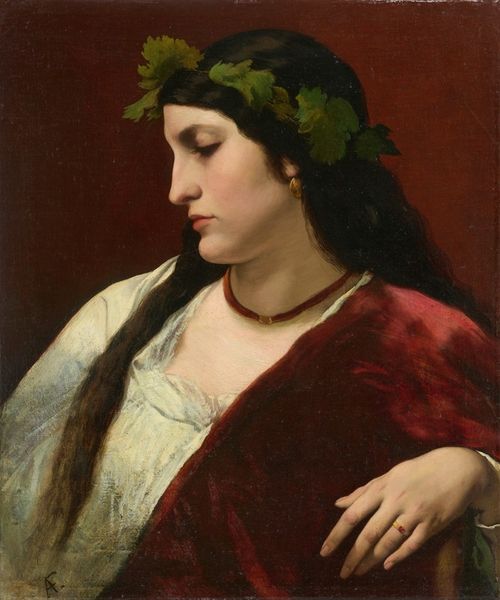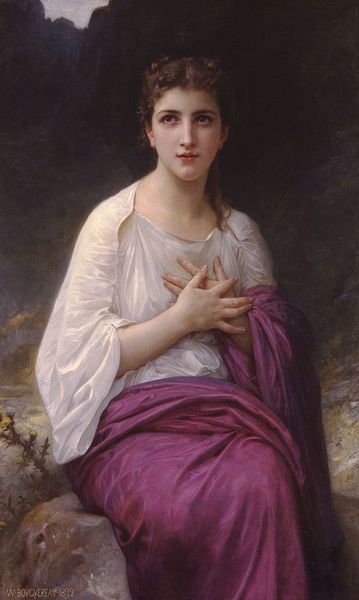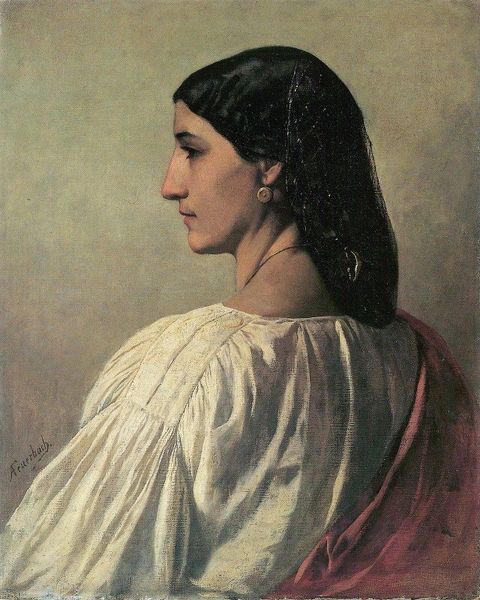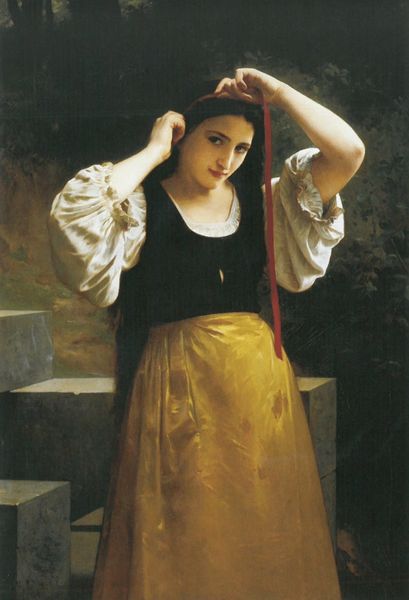
#
gouache
#
character pose
#
figurative
#
green hue
#
fashion editorial
#
culture event photography
#
green background
#
muted green
#
clothing photo
#
fashion shoot
#
fashion model stance
Copyright: Public Domain: Artvee
Curator: Here we have Jules Joseph Lefebvre’s “Graziella,” painted in 1878. Editor: Immediately, the composition strikes me – the way the figure is balanced against the landscape, a study in stillness and muted color. It's somber. Curator: Lefebvre was known for his academic style. Note the treatment of the figure - the smooth skin tones, the idealized features. But what interests me is that this reflects not just academic convention, but a specific fascination with representing labor through a romanticized lens. Editor: The romanticizing is precisely what I observe. Her pose is one of wistful melancholy, yet she holds the tools, so to speak—or evidence—of manual work, that netting. But is there tension? The structure seems to hold two incompatible visual and emotional concepts. Curator: I think it highlights a specific social dynamic of the era. Images like this were made for a consuming class who often saw laborers through the convenient abstraction of pretty aesthetics. She isn't really doing work now, is she? She is presented like a portrait of refined sadness. Note, too, the implicit tension between the material simplicity of the working attire and the almost regal color choice—the lapis lazuli gown. Editor: Yes, I see your point regarding the social implications. Formally, it's about juxtaposing texture—the rough, earthy rock against her almost luminous skin, also that net against the fabric of her clothing—creating subtle but very important contrasts within the composition. It does draw you in to look, if nothing else. Curator: Consider also the artist’s use of gouache, allowing for such detail. It speaks to an appreciation for both the delicacy of the medium and the value of skilled artistic labor within the social climate of the time. There’s an attempt to create beauty while subtly acknowledging class differences. Editor: Lefebvre certainly gives us a lot to unravel in such a still, visually subdued tableau. It leaves you with much to think about after even a short time spent considering all of those deliberate decisions and poses. Curator: Precisely. His work continues to offer interesting points of discussion in light of how we understand class, labor and visual culture now.
Comments
No comments
Be the first to comment and join the conversation on the ultimate creative platform.

